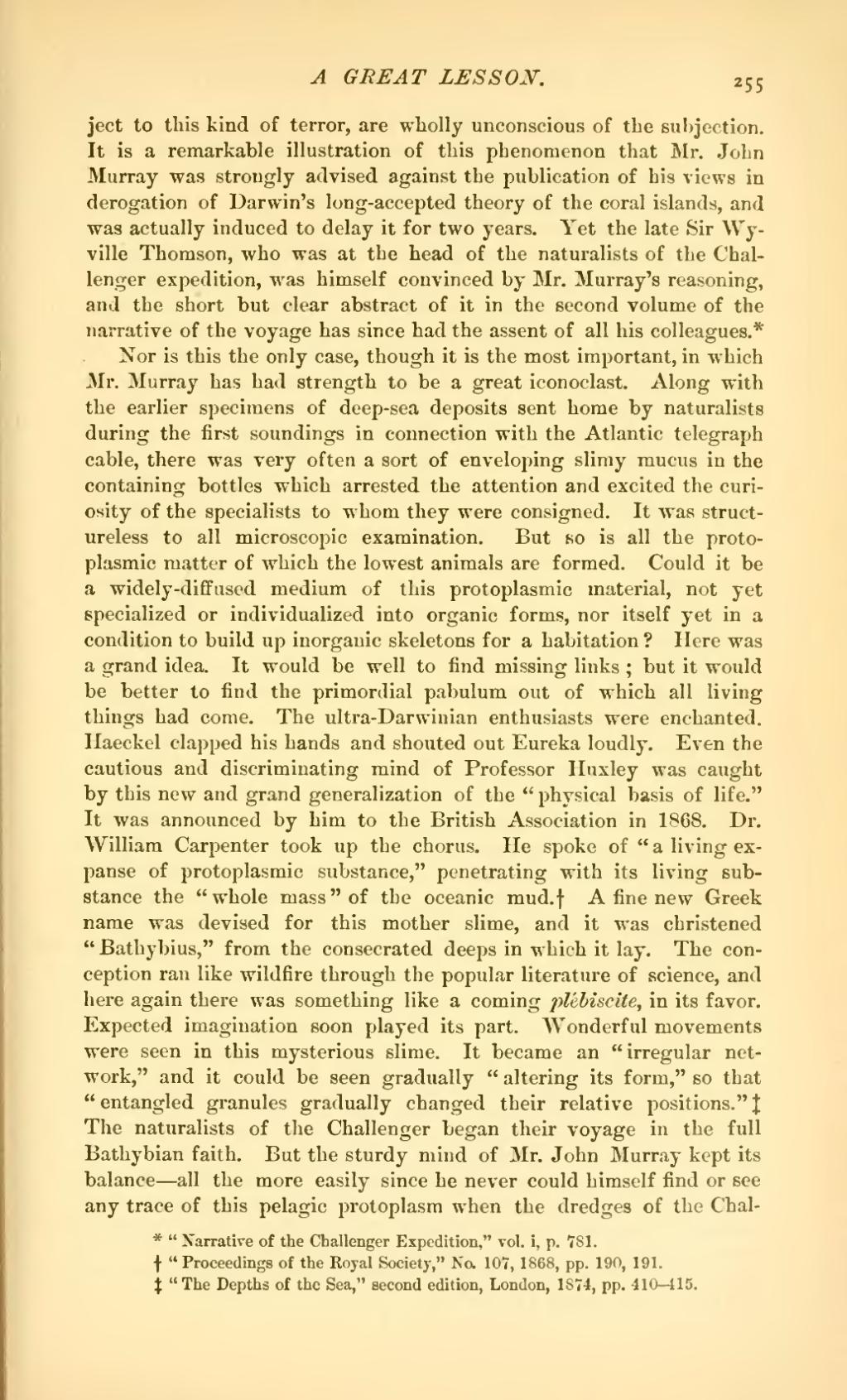ject to this kind of terror, are wholly unconscious of the subjection. It is a remarkable illustration of this phenomenon that Mr. John Murray was strongly advised against the publication of his views in derogation of Darwin's long-accepted theory of the coral islands, and was actually induced to delay it for two years. Yet the late Sir Wyville Thomson, who was at the head of the naturalists of the Challenger expedition, was himself convinced by Mr. Murray's reasoning, and the short but clear abstract of it in the second volume of the narrative of the voyage has since had the assent of all his colleagues.[1] Nor is this the only case, though it is the most important, in which Mr. Murray has had strength to be a great iconoclast. Along with the earlier specimens of deep-sea deposits sent home by naturalists during the first soundings in connection with the Atlantic telegraph cable, there was very often a sort of enveloping slimy mucus in the containing bottles which arrested the attention and excited the curiosity of the specialists to whom they were consigned. It was structureless to all microscopic examination. But so is all the protoplasmic matter of which the lowest animals are formed. Could it be a widely-diffused medium of this protoplasmic material, not yet specialized or individualized into organic forms, nor itself yet in a condition to build up inorganic skeletons for a habitation? Here was a grand idea. It would be well to find missing links; but it would be better to find the primordial pabulum out of which all living things had come. The ultra-Darwinian enthusiasts were enchanted. Haeckel clapped his hands and shouted out Eureka loudly. Even the cautious and discriminating mind of Professor Huxley was caught by this new and grand generalization of the "physical basis of life." It was announced by him to the British Association in 1868. Dr. William Carpenter took up the chorus. He spoke of "a living expanse of protoplasmic substance," penetrating with its living substance the "whole mass" of the oceanic mud.[2] A fine new Greek name was devised for this mother slime, and it was christened "Bathybius," from the consecrated deeps in which it lay. The conception ran like wildfire through the popular literature of science, and here again there was something like a coming plébiscite, in its favor. Expected imagination soon played its part. Wonderful movements were seen in this mysterious slime. It became an "irregular network," and it could be seen gradually "altering its form," so that "entangled granules gradually changed their relative positions."[3] The naturalists of the Challenger began their voyage in the full Bathybian faith. But the sturdy mind of Mr. John Murray kept its balance—all the more easily since he never could himself find or see any trace of this pelagic protoplasm when the dredges of the Chal-
Page:Popular Science Monthly Volume 32.djvu/267
A GREAT LESSON.
255
